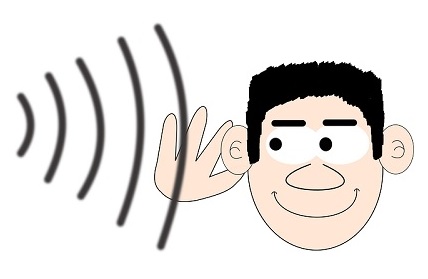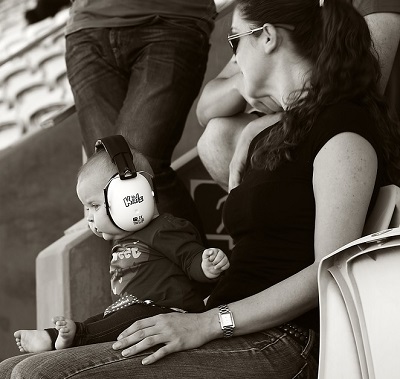As an Amazon Associate we earn from qualifying purchases.
If you work in an industry where high noise levels are common or if you just do a lot of DIY, you probably wear ear defenders regularly. Loud noises can pose a significant risk to your hearing, so ear defenders exist to protect your hearing as you work.
To help you better understand how these simple foam and plastic objects protect you, we’ve created a little explanatory guide that breaks down the science.
What is sound?
To understand how ear defenders protect your hearing, it’s important to first understand how sound works.
As you may be aware, sound is essentially just vibrations in the air which your brain interprets as sound. Louder sounds produce stronger vibrations.
At lower frequencies, those vibrations are able to be felt by your skin, which is why you may be able to feel the bass at a concert. Thanks to the sensitivity of the ear drum, vibrations are still able to be felt and interpreted at higher frequencies.
The difference between a sound and a shockwave is simply a matter of volume and frequency, so it’s absolutely critical that your hearing is protected.
How ear defenders work
When it comes to protecting your hearing, there are currently only two approaches that can be taken: passive noise reduction, and active noise reduction.
As the names may imply, passive noise reduction involves reducing volume through passive means, whereas active noise reduction involves some kind of active noise cancellation process to reduce volume.
Passive Noise Reduction
Passive noise reducing ear defenders such as these Mpow Ear Defenders work to deflect and absorb the energy from sounds in the air. This basically blocks the energy from reaching your ear, preventing damage to the sensitive parts of your inner ear.
To stop sound from reaching your ear, there are two options: deflect the sound with a really hard material, or absorb the sound with a soft material. Typically, the latter approach is chosen due to the lighter weight, usually in the form of acoustic foam. 
Foam is especially good for blocking loud noises as it is very light and effectively stops large air movements thanks to its porous nature.
The little pockets of air prevent any strong air flow from passing its energy efficiently through the material. This heightened air resistance causes the amplitude of any incoming sounds to be drastically reduced, effectively reducing the risk posed to your sensitive inner ear.
Active Noise Cancellation
Active noise cancellation is a clever technology that works effectively at reducing low-frequency constant noise. It’s commonly found in headphones for listening to music, though has applications in hearing protection products as well.
It works by using a microphone to pick up the sound around the wearer. That sound is then essentially flipped 180° out of phase and played back to the user through a speaker. In essence, this technology creates an “anti-sound” and outputs it, which nullifies the ambient noise.
Active noise cancellation doesn’t work very well with short bursts of noise or continuously changing noise. This is because it requires a computer chip to process the sound before it is outputted into the user’s ear.
Due to the delay caused by the computer chip, it works far better on steady noise as it means the “anti-sound” is still mostly accurate to the actual sound by the time the speaker plays it.
Summary
Though the science behind your critical hearing protection may be complex, the fundamental principles behind their design are quite simple. Your hearing protection aims to block sound by absorbing or deflecting it. In more niche circumstances, some degree of active noise reduction may be used.
Understanding how ear defenders work is critical to choosing a hearing protection product that will work effectively to protect your hearing or the hearing of your workers.
Related posts
Amazon and the Amazon logo are trademarks of Amazon.com, Inc, or its affiliates.
